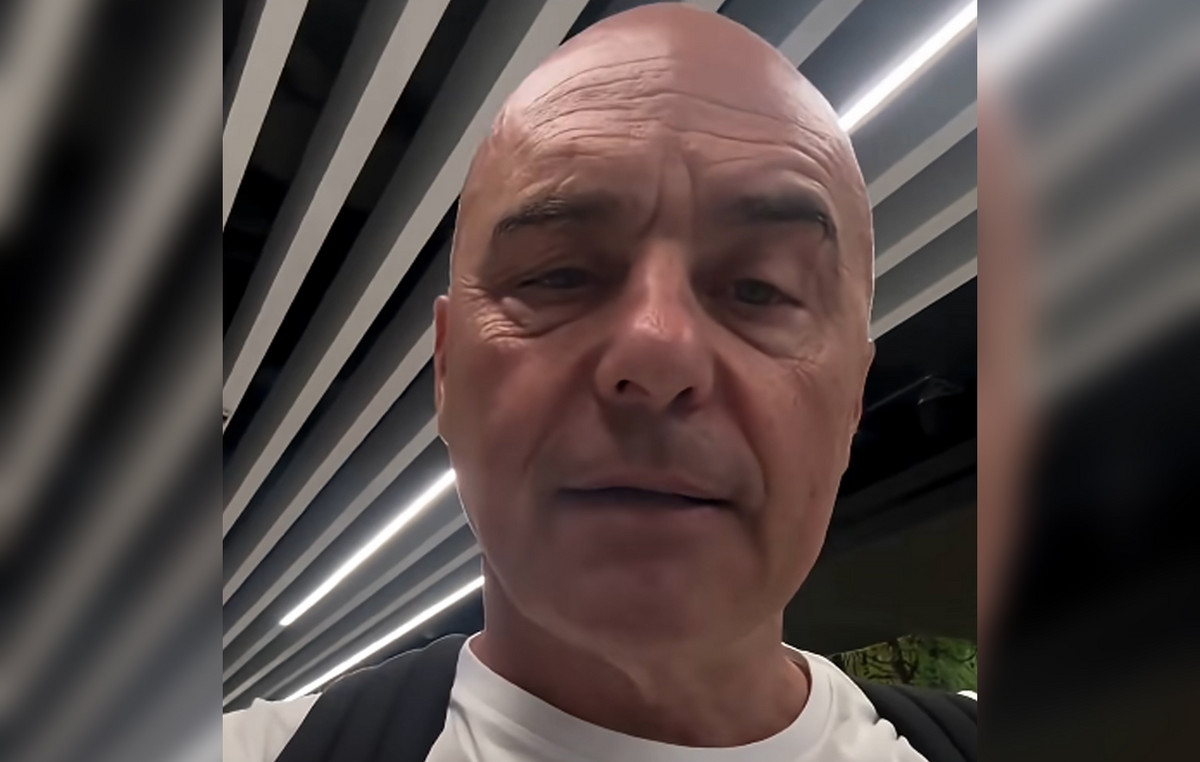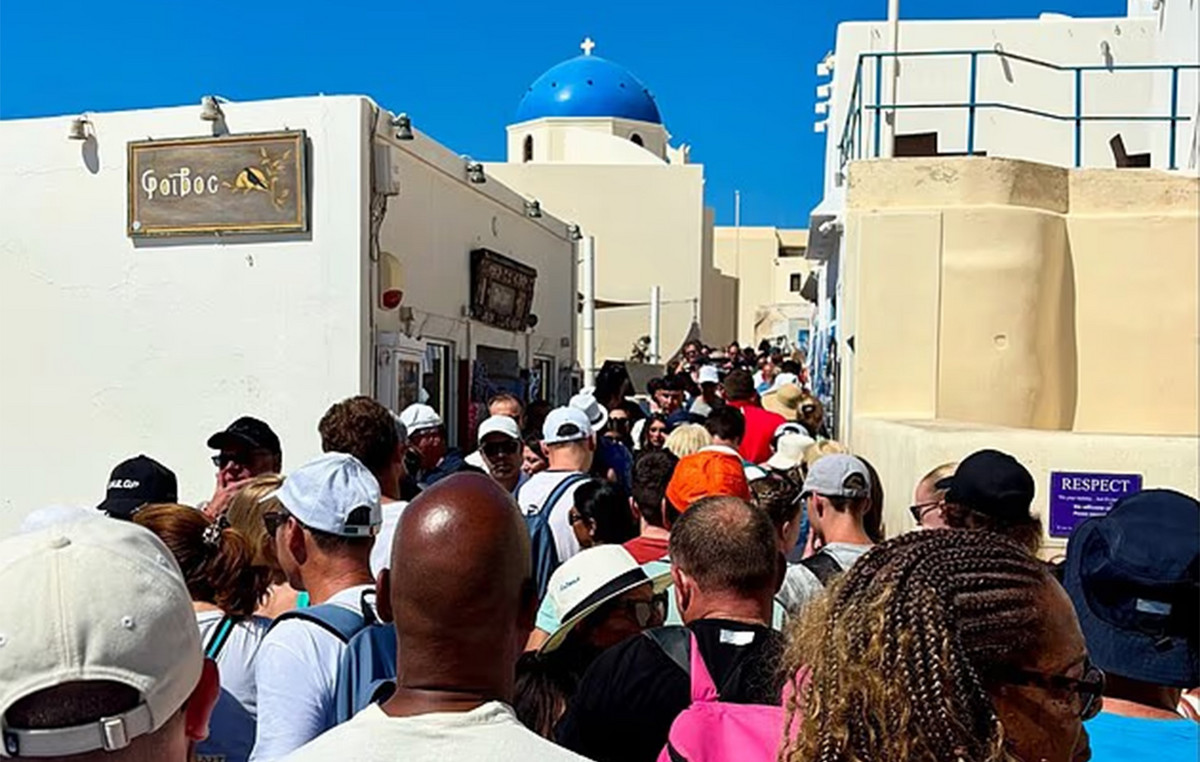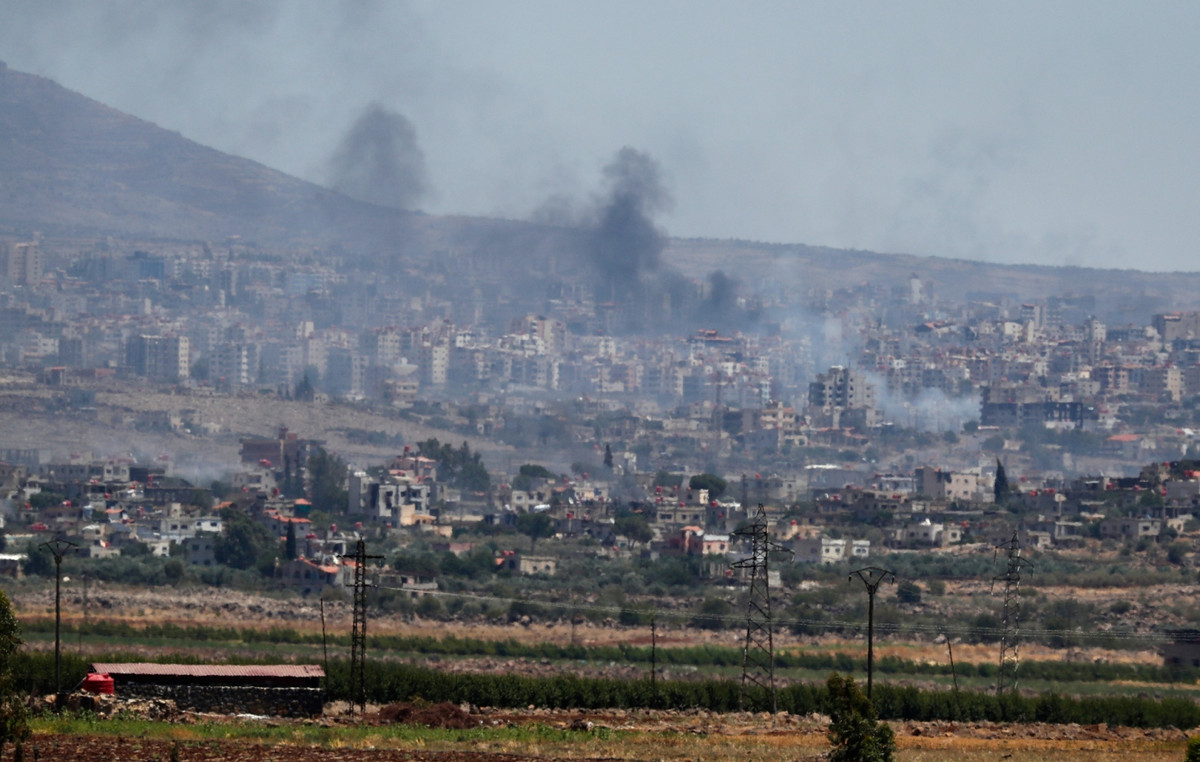Hundreds Thousands of Palestinians, who have been displaced several times by Israeli airstrikes in the Gaza Strip, now face another threat: the arrival of harsh winter.
On Sunday (24), the first strong storm to hit Gaza this winter was felt in all parts of the territory.
At a makeshift displacement camp near the sea in Deir al-Balah in central Gaza, thousands of families battled high tides, strong winds and rain that damaged their plastic tents.
Journalists from CNN they saw children walking around barefoot while their parents dug in the sand, trying to build a protective barrier from the sea.
Before they could make much progress, the tide washed everything away.
“We came here because the sea was our only protection. And now the sea is attacking us,” exclaimed one man.
The head of the United Nations Relief and Works Agency for Palestine Refugees (UNRWA), Philippe Lazzarini, warned on Tuesday (26), in a post on X, that, with the arrival of winter, people in Gaza “need everything, but very little goes in.”
Another #winter in #Gaza.
How to describe misery on top of a human tragedy?Over the past 14 months, people have been constantly displaced to escape death.
They lost everything.
They need everything, but very little comes into Gaza.Temperatures are dropping & rain is… pic.twitter.com/4OynV1R3Wg
— Philippe Lazzarini (@UNLazzarini) November 26, 2024
“Winter means people won’t just die from air raids, disease or starvation. The winter in Gaza means that more people will die shivering from the cold, especially among the most vulnerable, including the elderly and children,” wrote the head of UNRWA.
In October, the amount of aid entering Gaza reached the lowest level since Israel’s war began, according to data compiled by the UN.
COGAT, the Israeli agency that approves aid shipments to the Palestinian territory, said it was collaborating with the international community “facilitating the entry of winter supplies and shelter equipment, including heaters, warm clothing, tents and blankets.”
But UNRWA claims the aid is not enough and says Israel has blocked almost all United Nations efforts to deliver aid to northern Gaza in recent weeks.
Low temperatures
The average temperature in Gaza is between 10°C and 20°C in December, falling even further in January.
The rainy season typically lasts from November to February, with the first month of the year being the wettest.
Water that flooded some tents in Deir al-Balah soaked everything inside, leaving blankets and carpets tangled and dusty.
Large plastic sheets that served as flooring sank into the wet sand, leaving nothing between those sheltering inside and the bare ground.
“What will keep us warm tonight?” asked Mohammad Younis, one of the displaced, as he picked up wet clothes.
“We are like beggars before the world, and no one cares about us. I don’t know where I’m going to sleep, it will be at sea”, he shouted.
The canvas that served as the roof of Younis’ tent ripped, allowing water to enter.
In another makeshift tent flooded by rough seas, a displaced family of 10 sat shivering as their mother, Um Fadi, cooked over the fire.
When they were displaced from Rafah months ago, she said they were forced to take shelter on the beach because there was nowhere else to go.
“We are trapped from all directions. From the sea, from the Israelis, from not having a home, from hunger”, he exclaimed.
Families ‘cold and at risk’
After a year of war triggered by Hamas’ October 7 attacks on Israel, at least 1.9 million people — or about 90% of the population of the Gaza Strip — are internally displaced, according to the UN.
Many have been displaced repeatedly, about 10 times or more, he added.
The Norwegian Refugee Council said in a recent report that Israel’s ongoing offensive has given Palestinians fewer shelter options this year compared to last.
“This winter, as fewer buildings remain standing, many Palestinians are forced to live in tents and makeshift shelters that provide less protection from cold wind and rain,” the report said.
As of September 2024, more than 200,000 housing units in Gaza have been destroyed and severely damaged, according to the UN Office for the Coordination of Humanitarian Affairs, which added that almost a million people need “winter support.”
Tens of thousands of displaced Palestinians have sought shelter in Al-Mawasi, in southern Gaza, designated a “humanitarian zone” by the Israel Defense Forces (IDF).
Many are living in tents in an area with limited infrastructure or access to humanitarian aid.

In recent months, the coastal camp has been repeatedly hit by Israeli strikes, strikes that the IDF has targeted against Hamas.
The tents are dilapidated after heavy rains and brutal winds.
As Sunday’s storm (24) passed, people’s belongings were scattered across the beach, some were swallowed by the sea.
Mohammed Alkhatib, deputy director of programs for Medical Aid for Palestinians (MAP) in Gaza, said the plight of displaced Palestinians in Gaza had “many faces” in a statement shared with the CNN by MAP.
Most of the tents and makeshift shelters they rely on have been used for months and need to be replaced to withstand harsh winter conditions, he stated.
“It’s unimaginable to know they can barely survive regular weather with what they have. The lack of adequate clothing, blankets and safe heating methods means families will remain cold and at risk for many months,” he added.
It is a fear that haunts Um Fadi in Deir al-Balah every day.
“Tonight, we are threatened by great danger. At any moment, the sea could swallow us. We don’t know what we will do,” she exclaimed.
Tents soaked in rain
In northern Gaza, the Israeli army is carrying out a widespread operation that has entered its second month.
Bombing has displaced up to 130,000 Palestinians since October 6, according to the United Nations Population Fund, and the need for help is urgent.
Many sought shelter at the Yarmouk sports stadium in Gaza City, where tents made of white fabric turned brown on Sunday (24) after a night of heavy rain.
Just like at the seaside shelter, young children stood barefoot on wet asphalt or jumped in puddles, wearing just enough to keep them warm, while parents tried to repair damaged tents.
The weather is posing one of the biggest risks to Palestinians in Gaza right now and is “another component to killing people,” Louise Wateridge, a senior emergency officer at UNRWA, told CNN this Friday (29) from Gaza City.
“The wind and rain are increasing and people are living in these very dangerous structures, this bad weather can bring them down on top of people”, he assessed.
Sami Salehi said he fled “suffering, airstrikes and death” in the north, seeking shelter in Gaza City.
But the water had swallowed his tent and he told the CNN who had no fuel or wood to make a fire.
Picking up the wet blanket and sodden mattress, Salehi asked how he and his 14 children would sleep that night.
“This tent is made of cloth, so when water gets in, it goes everywhere. And we are in a low area, so even if the roof protects us, the water will come from below”, he said.
After suffering an injury in an Israeli airstrike, Salehi said he thought he would die, but was surprised to see that God had saved his life.
“I wish I had died instead. Death is more honorable than this life.”
This content was originally published in Winter in Gaza: Palestinians face risk of death amid cold on the CNN Brasil website.
Source: CNN Brasil
Bruce Belcher is a seasoned author with over 5 years of experience in world news. He writes for online news websites and provides in-depth analysis on the world stock market. Bruce is known for his insightful perspectives and commitment to keeping the public informed.







